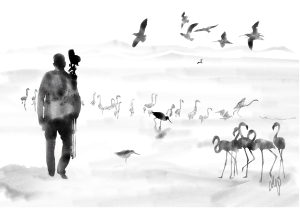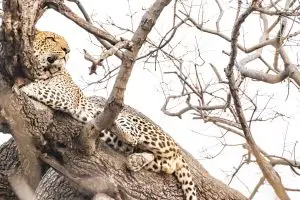Two safari guides meet in Etosha, exchange information, and ask each other if they’ve seen anything interesting. The typical response to this question is often “No,” and it usually refers to the fact that they haven’t spotted lions, rhinos, or any other noteworthy animals. Even though there are hundreds, truly hundreds of zebras, springboks, wildebeests, gemsboks (yes, also known as oryx, which is mainly a genus name), familiarly lining the roadside, they tend to ignore the dust clouds kicked up by self-drivers braking too abruptly.
We prefer to distance ourselves from this Platonic “checking off the list” mentality, which insists on “must-see” animals like lions. This is because, thanks to our meticulous approach, we usually spot these animals before most other tourists anyway! Instead, we enjoy discussing the “ordinary” animals.
Take a closer look at the zebras!
How far do the stripes on the legs go… or are the legs entirely white?
How pronounced are the shadow stripes?
How large is the zebra, more like a pony or more like a draft horse?
And lastly, the question: “Do zebras actually have white or black stripes?”
It may seem like the striping is black on white fur, but in fact, it’s the other way around.
On our “Wildlife Big 5” journey, zebras always play a significant role because in Namibia, there are two fundamentally different types, namely the Hartmann’s mountain zebra (Equus zebra) and the plains zebra (Equus quagga)
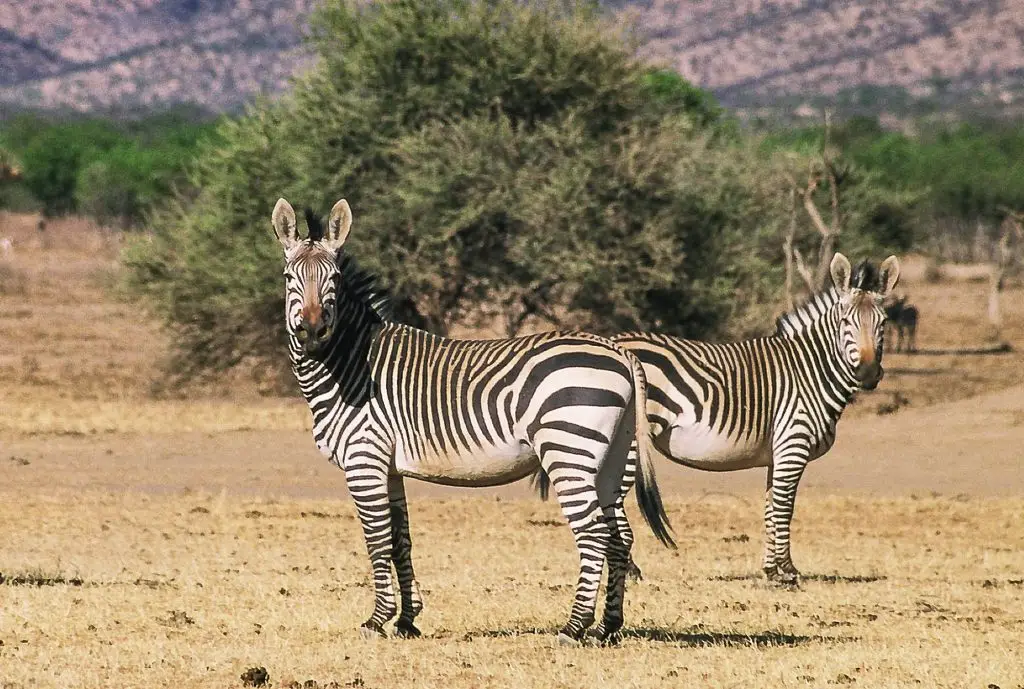
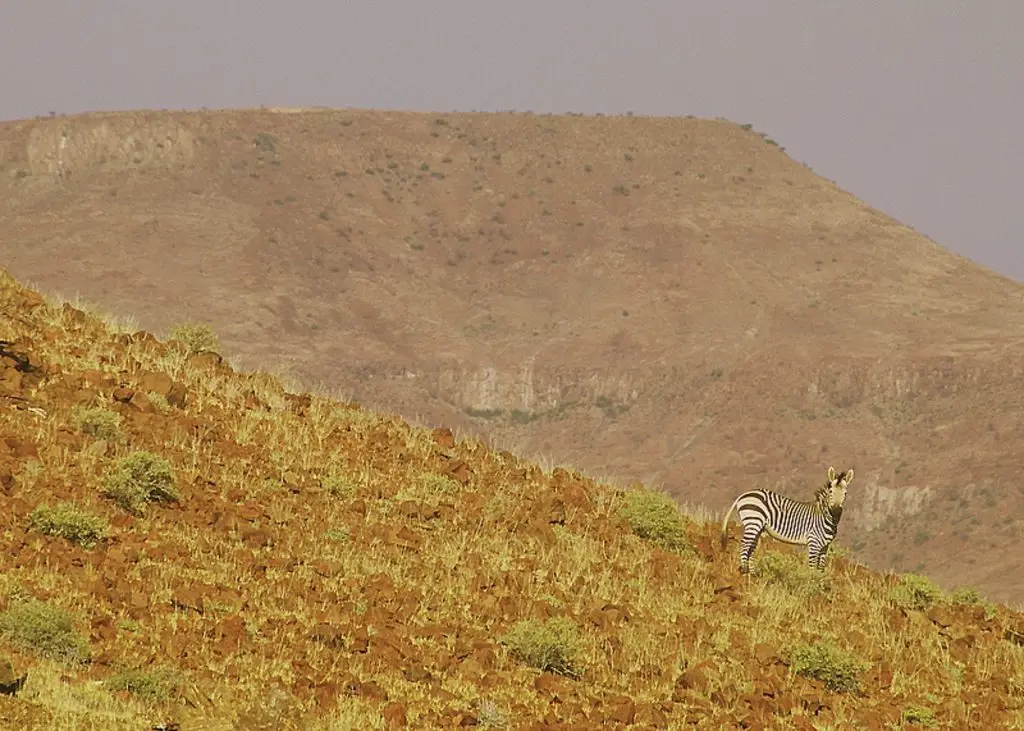
The Hartmann’s mountain zebra and the Cape mountain zebra belong to the same species, and ongoing genetic research aims to further classify them. Specifically:
Equus zebra zebra is the Cape mountain zebra.
Equus zebra hartmannae is the Hartmann’s mountain zebra, which resides as a protected species in western Namibia.
This mountain zebra is named after Georg Hartmann, a German geographer who made significant contributions to the exploration of Namibia during his work with the Otavi Mining and Railway Company.
Mountain zebras can be recognized by their behavior and physical characteristics. They tend to have a confrontational posture, moving in an arching manner to quickly reorient themselves towards potential threats. Additionally, they lack prominent shadow stripes, have a white belly, well-defined dewlap, and a cross-striped pattern extending to their rump. Their ears are notably large, and their nostrils are a golden-brown color.
The plains zebra, or common zebra, is widespread in Africa and has several interesting subspecies. In general, plains zebras have stripes that extend down to their belly and rump, black nostrils, and relatively small ears.
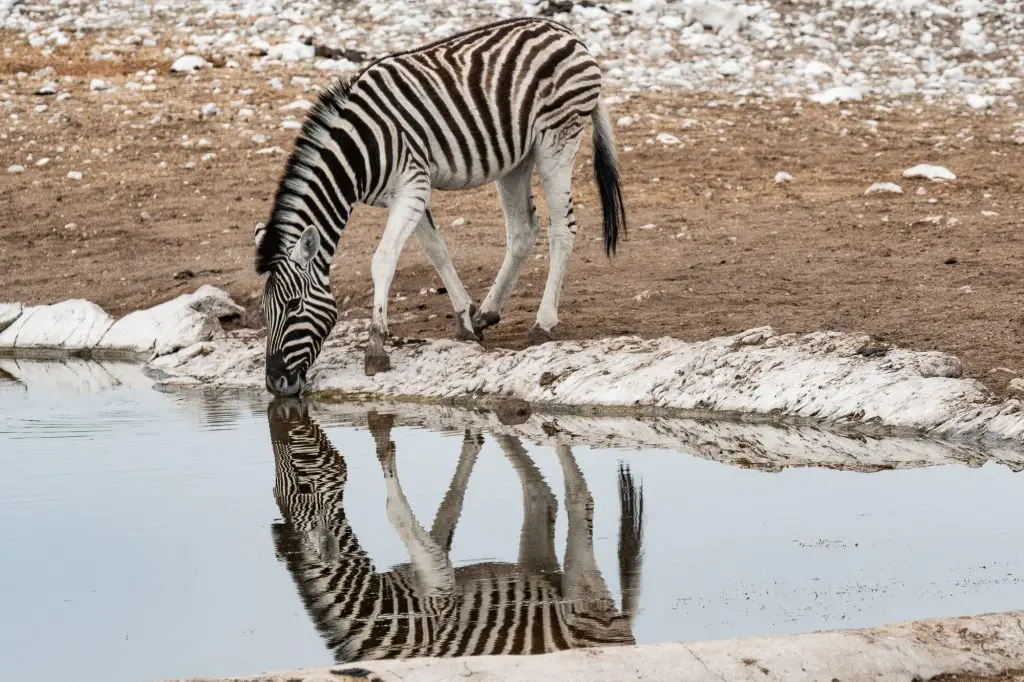

In Etosha National Park, you can find relatively large plains zebras. These belong to the Equus quagga burchelli subspecies (formerly Equus burchelli or E. quagga antiquorum), which were once known as Damara Zebras. They are characterized by legs with minimal striping, a large body, a distinct mane, and prominently visible brown shadow stripes.
The British explorer and naturalist, William John Burchell, was known for his extensive explorations and documentation of South Africa’s flora and fauna in the early 19th century.
It’s important to note that the Chapman’s zebra (Equus quagga chapmani) is found in the southeastern regions of Africa and exhibits less pronounced shadow striping, with some individuals having almost none. The striping on their legs is more distinct than that of our “Etosha Zebras.” Due to active wildlife trade, it is believed that some of the zebras on private game reserves and wildlife sanctuaries in Namibia may represent Chapman’s zebras based on their appearance.
In the Caprivi region, the zebras are likely of the chapmani subspecies, known as Chapman’s zebras.
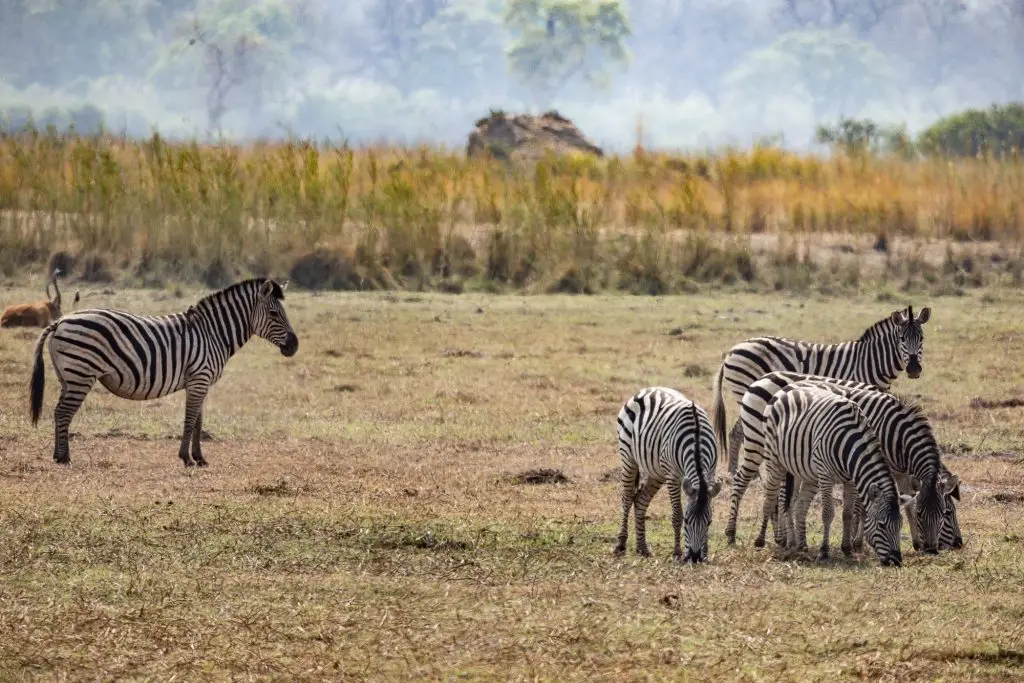
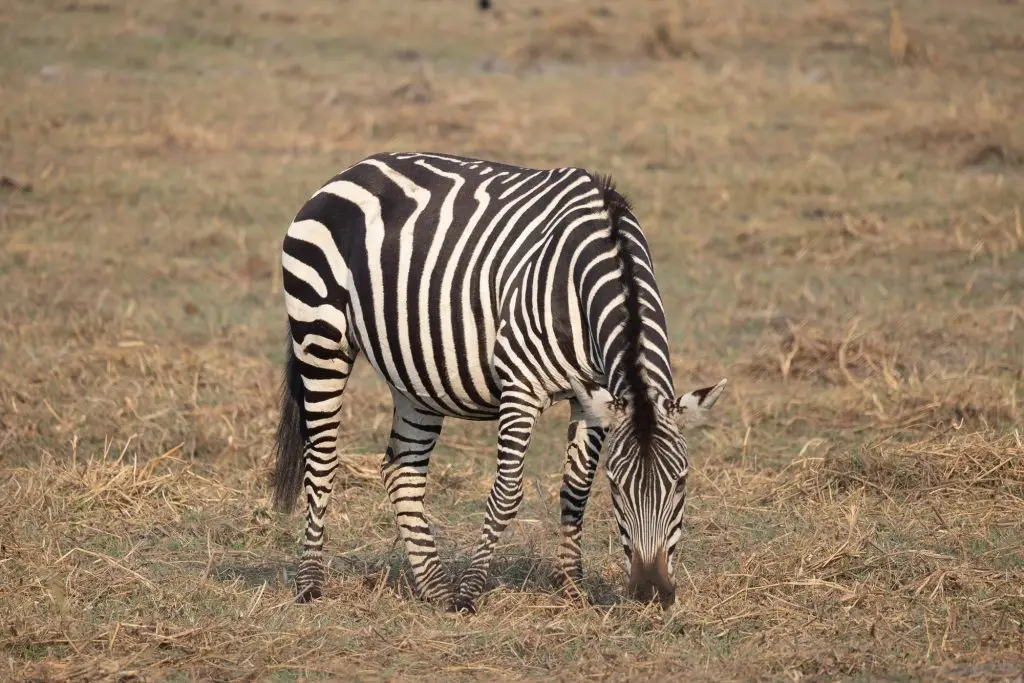
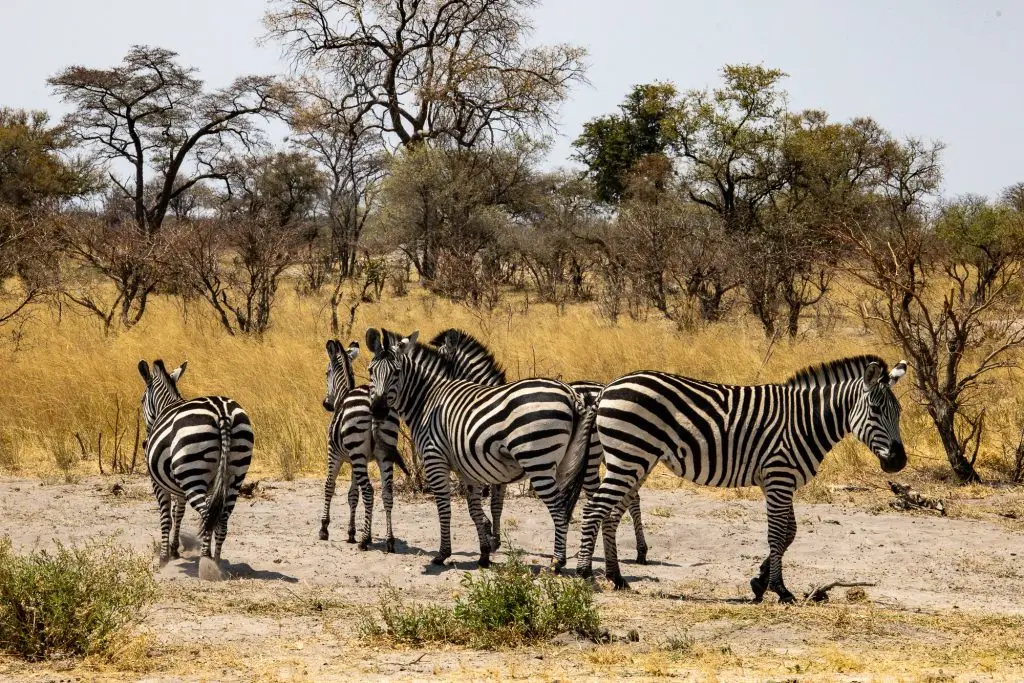
On our recent safari in Uganda, we focused on observing the well-known “maneless” zebras. We found these in the northern region of Kidepo Valley. These zebras belong to the Equus quagga borensis subspecies.
In the southern part of Uganda, we encountered Böhm’s zebras, also known as Grant’s zebras (Equus quagga boehmi). These are the smallest among the various subspecies of plains zebras, and the noticeable size difference compared to “our” zebras in Namibia was striking.
What was particularly interesting was the absence of shadow stripes in all the northern subspecies of zebras, and the striping extended to their hooves, which was quite visually striking.
In the Caprivi region, there are sightings of zebras that lack shadow stripes and exhibit contrasting striping that extends down to their hooves. This has led to some confusion, especially considering there is literature suggesting a potential presence of Böhm’s zebras in the Caprivi region. It raises the question of whether these zebras are strays from other regions.
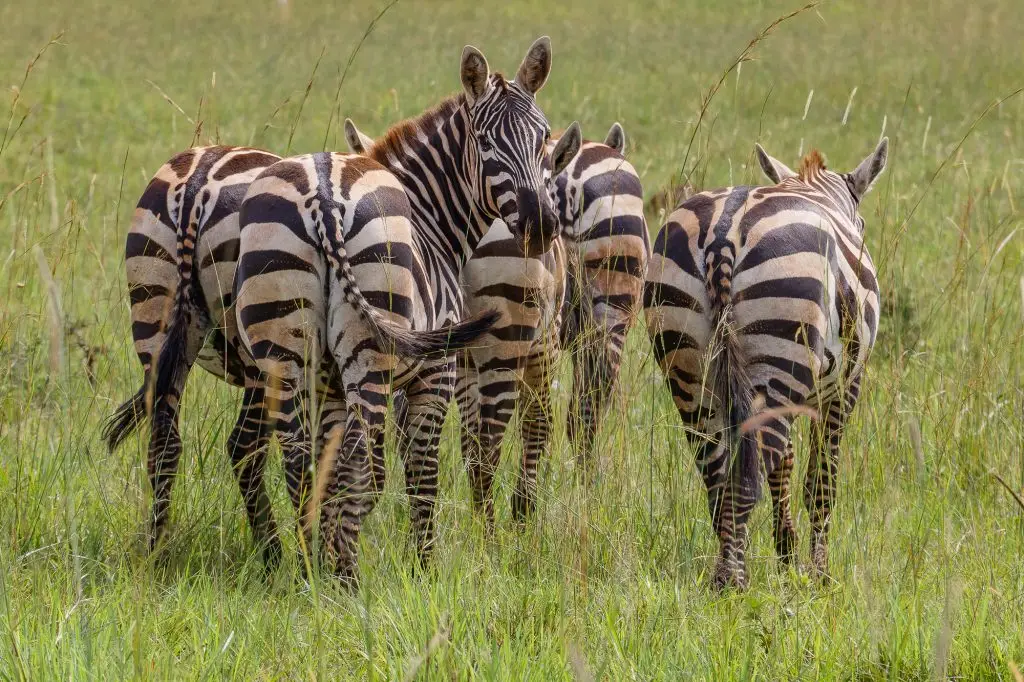
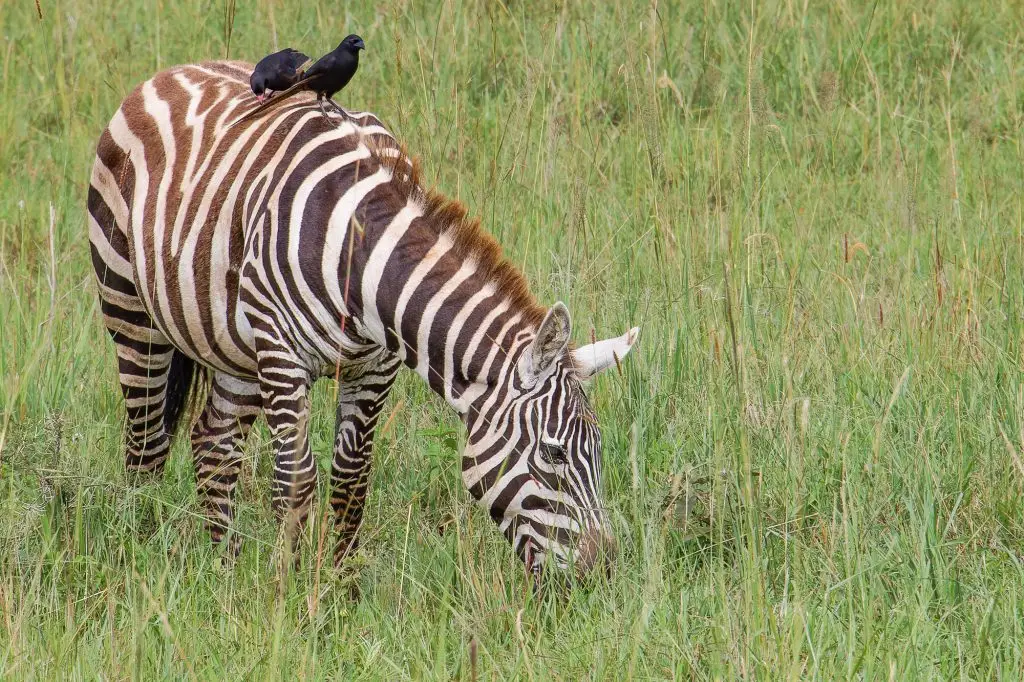
In conclusion, when exploring as from Etosha north-eastwards, it’s quite a delightful puzzle to identify which subspecies of zebras one may encounter, as the boundaries are not clearly defined, and the transitional areas remain complex and uncharted.
Moreover, in Tanzania, Zambia, Malawi, and Mozambique, you can find the Crawshay’s zebra (Equus quagga crawshayi).
Additionally, Kenya is home to the well-known Grevy’s zebra Equus grevyi, which is a remarkable species on its own.
Perhaps it’s an idea worth considering to introduce these zebras to new areas…. just to confuse everybody even more 😉
If you’re interested in learning more about the reasons behind the stripes of zebras, please visit this link.
Last Updated on 1. June 2024 by Albert Voigts von Schütz



